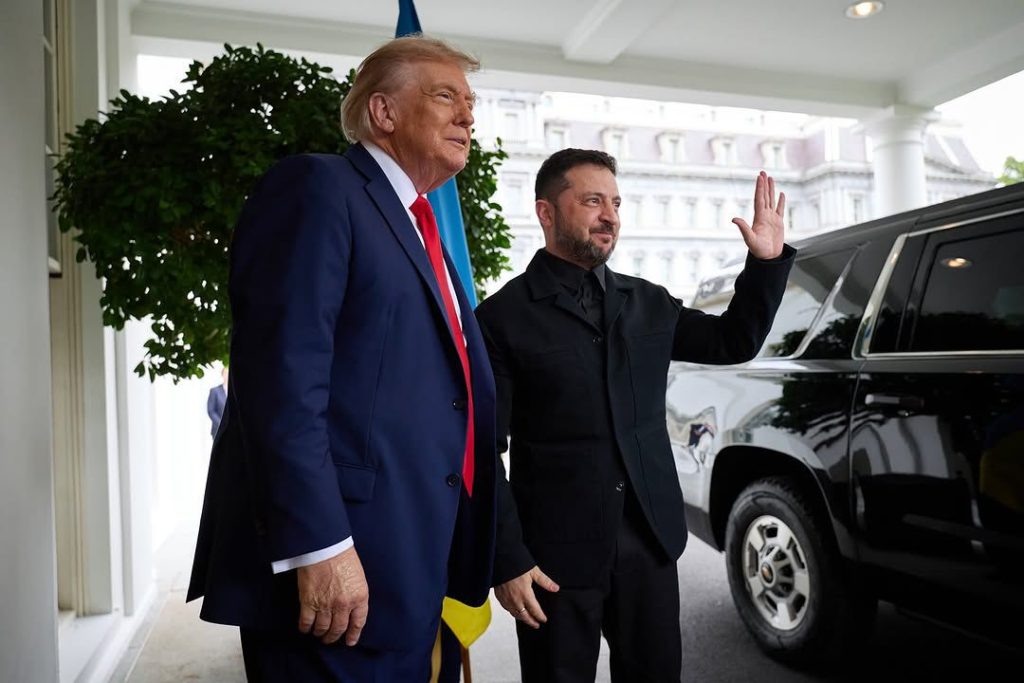On 18 August 2025, US President Donald Trump and Ukrainian President Volodymyr Zelensky met at the White House for a high-stakes discussion about the future of the Russia-Ukraine war. The summit, attended by top European leaders and NATO allies, became one of the UK’s most searched topics and quickly attracted global attention—reflecting the sense that US attitudes toward Ukraine may influence peace and security in Europe for years to come.
Setting the Stage: From Conflict to Diplomacy
The meeting occurred in the wake of Trump’s recent, closely watched summit with Russian President Vladimir Putin in Alaska. Despite calls for a swift ceasefire and mounting international pressure, no immediate breakthrough was announced. Trump subsequently welcomed Zelensky and senior European figures to Washington, seeking what the US president termed a “durable peace agreement” and signalling a willingness to impose new conditions on Ukraine.
Zelensky arrived accompanied by leaders such as UK Prime Minister Keir Starmer, French President Emmanuel Macron, German Chancellor Friedrich Merz, and EU President Ursula von der Leyen, highlighting the European Union’s determination to defend Ukraine’s sovereignty.
What Was Proposed: Ceasefire and Concessions
Trump reportedly pressed Zelensky to accept several Russian demands: ceding the Crimean Peninsula permanently to Russia, agreeing never to join NATO, and engaging in direct peace talks with Putin. These positions closely align with conditions advanced by Putin and mark a shift from previous transatlantic unity on Ukraine’s right to self-determination.
British officials expressed concern that any agreement requiring Ukraine to give up territory could set a dangerous precedent and weaken long-term European security. Many commentators noted the prime minister’s visible discomfort and repeated assurances that the UK would continue to support Ukraine, regardless of Washington’s shift.

Zelensky’s Response: Defiance and Diplomacy
Zelensky firmly rejected the proposal to relinquish Ukrainian land or to rule out NATO membership. In public statements ahead of the meeting, he insisted, “Russia must end this war—the war it started. Our shared strength with America and our European friends can compel real peace.” He called for an immediate ceasefire, followed by structured diplomatic negotiations, supported by European security guarantees.
The Ukrainian leader dressed in a suit—contrasting with previous visits—and delivered a message that resonated with many European allies: Ukraine’s fate cannot be negotiated solely between Washington and Moscow. The presence of European leaders alongside Zelensky served not just to show symbolic support, but also to exert real pressure on US policymakers.
European Involvement: Unity Despite Challenges
The wider participation of the EU, UK, and NATO figures brought additional diplomatic weight. According to officials, over a dozen heads of state joined talks and working lunches in Washington. French President Emmanuel Macron was among those publicly pushing for robust security guarantees and a peace framework that would protect Ukraine from future aggression.
EU leaders proposed a multinational peacekeeping force as part of a possible settlement, and Zelensky appealed for an “architecture of security guarantees” akin to NATO’s Article 5 provisions—the pledge that aggression against one is met by collective defence. The UK Defence Secretary and the Foreign Office released parallel statements pledging more humanitarian and military aid, with UK experts warning against “any settlement not backed by the Ukrainian people.”
The Outcome and Next Steps
The US president maintained the necessity of concessions, while Zelensky and partners stood firm. Negotiators from all sides agreed to continue discussions, though tensions between Washington and Kyiv were evident throughout the day.
Recent Russian strikes in Ukraine—including attacks on Khiv and Zaporizhzhia causing civilian casualties—cast a shadow over peace efforts and bolstered calls for continued support to Kyiv.
A YouGov poll released in the United States after the meeting showed sharply divided public opinion about Trump’s approach, with British analysts warning that diminished US resolve could empower Russian ambitions across Eastern Europe.
UK Perspective: Why Does This Matter?
For the UK, this meeting is a pivotal test of the transatlantic security partnership. British interests in European stability have long relied on US support. Any weakening of Ukraine’s sovereignty could embolden other authoritarian powers and threaten vital British interests.
British diplomats are pushing for a multilateral peace process, greater European leadership, and ongoing dialogue. There is growing recognition among experts and MPs that the UK may need to do more, whether by sending advanced military aid, deepening security ties, or robustly advocating for Ukraine’s territorial integrity.
Closing Thoughts
The Trump-Zelensky meeting will shape the international response to Russia’s war on Ukraine for months to come. For UK audiences, it signals both the enduring value of unity and the real risk of divergence in Western policy. As negotiations continue, British eyes remain focused on Washington, Kyiv, and Moscow—hoping for peace, but determined that it must not come at the cost of justice or the rule of law.
Read more: romero


